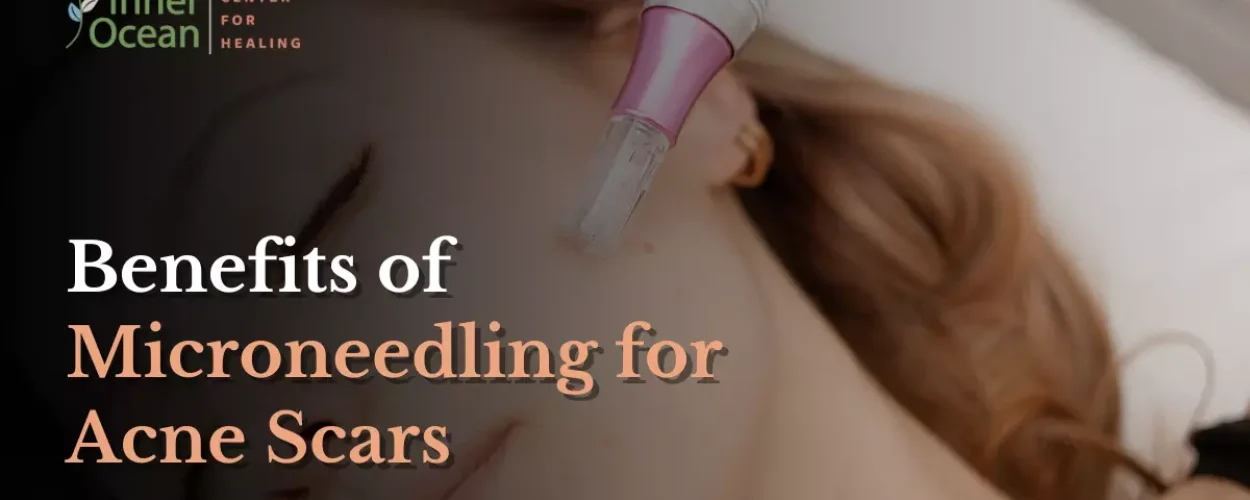Are you tired of your acne scars that don’t fade away?
Acne scars are stubborn and a disheartening reminder of skin struggles. These often diminish confidence and overshadow one’s natural beauty. But get discouraged yet because there’s hope.
Microneedling emerges as a promising solution in the realm of dermatological advancements. This innovative procedure uses fine needles to rejuvenate the skin and stimulate collagen production. Due to its effectiveness, it has become popular, especially for those who are looking for a non-invasive acne treatment procedure.
In this article, we’ll delve into the benefits of microneedling for acne scars. We’ll also provide valuable insights that will help you make an informed decision. So continue reading to learn how it can be a game-changer for your skin health.
What Are Acne Scars?
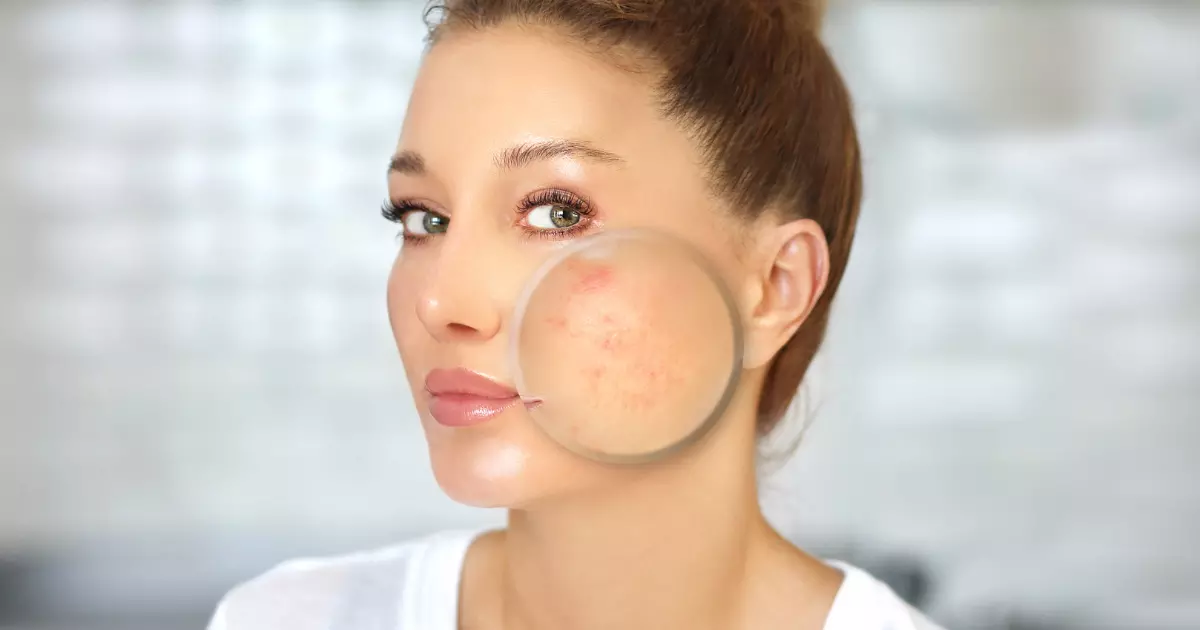
Acne scars are lasting skin alterations that appear after an active acne has healed. They are the result of the skin’s natural healing process. When acne causes skin damage, the body reacts by initiating a repair process. It involves the production and remodeling of collagen fibers within the skin tissue. This collagen response is crucial in determining the formation of an acne scar.
The development of facial acne scars is closely linked to the severity of the acne. More severe acne penetrates deeper layers of skin. It is more likely to leave a scar and needs a series of treatments. The extent and nature of these scars can vary. But most of the factors that influence it are genetic predisposition and skin type. The way it is treated or managed during acne breakout is also a factor.
It’s important to note that the appearance of scars caused by acne has a significant emotional and psychological impact on many individuals. They can affect one’s self-esteem and body image. Understanding and effective treatment of these scars are crucial.
What Causes Acne Scars?
Understanding what causes acne scars is vital in seeking the right acne scar treatment. While various cosmetic procedures are available, knowing the root cause helps in choosing the most effective treatment modalities. Treatments like laser therapy, microneedling procedures, and others focus on altering the skin tissue and collagen production to improve the appearance of scars.
Here’s a closer look at what causes acne scars.
Inflammation
Inflammation plays a crucial role in the formation of acne scars. When acne causes significant swelling, it damages the surrounding tissue. The deeper and more intense the inflammation, the higher the likelihood of a scar during the wound healing phase. Inflammatory acne, particularly cystic acne, tends to disrupt the skin tissue significantly. This disruption often leads to scar formation.
Deep Skin Lesions
Deep skin lesions are a primary cause of acne scars. These lesions extend into the deeper layers of the skin. Throughout the natural process of wound healing, these disrupt the skin tissue and collagen levels. The body’s natural response to repair this damage often leads to scar formation. This especially occurs when the healing is uneven during the wound healing phase.
Popping or Picking Acne
Popping or picking acne is a common yet harmful practice that can exacerbate scarring. When acne lesions are manually interfered with in the early wound healing phase, it disrupts the natural collagen and the natural healing process of the skin. This leads to deeper wounds and the potential for more significant scars.
Delayed Acne Treatment
Delayed acne treatment can lead to more severe or prolonged acne. As a result, the risk of scarring is more likely to happen. Early and effective management of acne is crucial to prevent the formation of deep scars and preserve skin texture.
Genetic Factors
Genetic factors also play a significant role in the development of acne scars. Individuals with a family history of acne scars may have a higher propensity to develop them. A genetic predisposition influences the normal process of wound healing.
Collagen Response
In the process of wound healing, two key processes are involved in scar formation: the loss of collagen and the overproduction of collagen. Dropping in the production of collagen can lead to indentations. Excess collagen levels can cause raised scars to appear. This imbalance in collagen production and skin tissue repair is what leads to the appearance of acne scars.
Skin Types
Skin types also influence the likelihood and type of acne scars. Certain skin types, particularly those prone to oiliness or dryness, may be more susceptible to scarring. Additionally, darker skin tones may experience post-acne hyperpigmentation. This condition isn’t scarring but can accompany or follow acne. It results in dark spots where acne lesions are present.
Hormonal Factors
Finally, hormonal factors can contribute to the development of acne scars. Hormonal imbalances during puberty, pregnancy, or due to certain health conditions can exacerbate acne. These can also cause more severe breakouts and increased risk of scarring.
What Are The Different Types of Acne Scars?
Each type of acne scar has its own set of causes and characteristics. It is important to note that the choice of acne scar treatment method varies. Understanding these types of scars is crucial for patient satisfaction for acne scar reduction.
There are two primary types of acne scars: atrophic scars and hypertrophic scars. Let’s discuss these below.
Atrophic Acne Scars
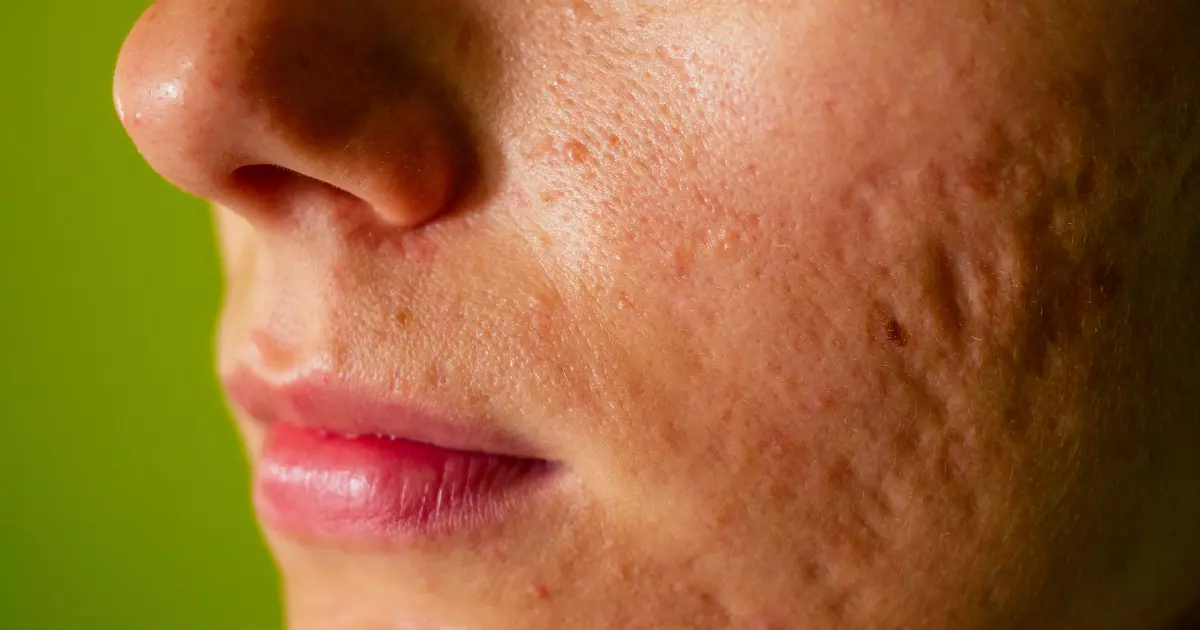
Atrophic acne scars are the result of loss of skin tissue. They often have a sunken or pitted appearance. They are small, round depressed acne scars that often vary in depth and size. These cause uneven skin tones that are particularly noticeable under certain lighting conditions.
Mostly, the cause of atrophic acne scars is the insufficient production of collagen during the healing process. When the body fails to produce enough collagen to fill the space left after an acne lesion heals, it results in a depression or pit on the skin’s surface.
Individuals who have experienced severe or inflammatory acne are more prone to developing atrophic acne scars. These scars are more likely to form in areas where the skin is thinner such as on the cheeks and temples. These can be further classified into different types:
Boxcar Scars
Boxcar scars are a specific type of atrophic acne scar that present as round or oval depressions with sharp, vertical edges. They are somewhat similar to chickenpox scars in appearance. These scars are wider than icepick scars and give the skin a pitted, uneven look. The depth can vary. Some are quite shallow and others are more pronounced.
The cause of boxcar scars is the destruction of collagen due to severe acne such as nodules or cysts. When these types of acne lesions heal, they leave behind a loss of tissue and result in a sunken scar. Individuals who have had severe, inflammatory acne are more prone to developing boxcar scars. These scars are more likely to occur on areas of the face where the skin is thicker like on the lower cheeks and jawline.
Icepick Scars
Icepick scars are among the severe side effects of acne. They appear as narrow, deep, and sharp indentations that extend into the papillary dermis. They resemble the puncture marks that would be left by an ice pick. These scars are typically small in size but quite deep. These make them one of the more noticeable types of acne scars.
The primary cause of icepick scars is the inflammation from severe acne which penetrates deep into the skin. When these deeper layers of skin are damaged, the surrounding tissue collapses into a narrow, V-shaped scar as it heals. This type of scarring is a result of the skin’s inability to regenerate tissue effectively. These scars are commonly found on the cheeks and forehead. They are also known for being particularly challenging to treat due to their depth and narrow opening.
Rolling Scars
Rolling scars are characterized by their undulating, wave-like appearance on the outer layer of the skin. These scars typically have a shallow depth but cover a larger area. They create a rolling or uneven texture on the skin’s surface. They are often soft to the touch and give the skin a bumpy, irregular look.
The cause of rolling scars is the fibrous bands that develop between the skin and the underlying tissue during the healing process of widespread, long-term acne. These scars are typically found on areas of the face where the skin is thicker.
Hypertrophic Scars
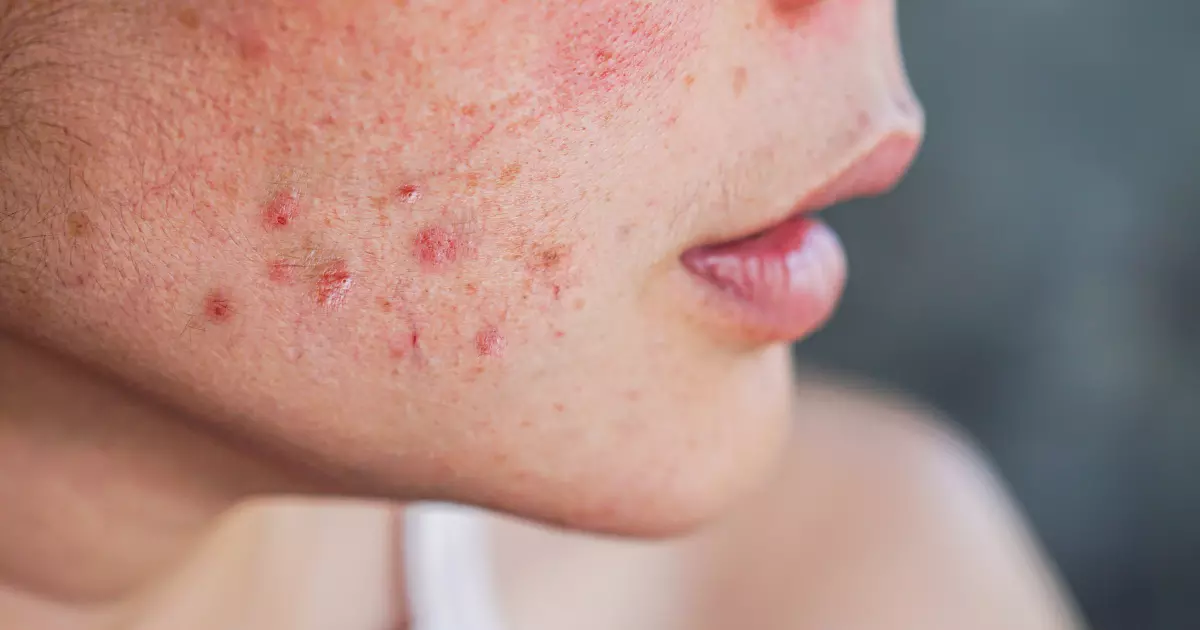
Hypertrophic scars are also among the negative side effects of acne. These are raised scars that remain within the boundary of the original wound. These scars are typically red or pink and can be itchy or painful. They often have a firm, raised texture and may appear thicker than the surrounding skin.
The scars occur when there is excessive collagen formation during the skin’s healing process after active breakouts. This overproduction results in a buildup of scar tissue at the site of the wound.
Individuals with a history of severe or deep skin wounds are more prone to developing hypertrophic scars. They are also more common in younger individuals. These tend to appear on certain areas of the body where the skin is tighter such as the shoulders or chest. Unlike keloids, improvement of scar appearance may become flatter and less noticeable over time. However, they can still pose a cosmetic concern. That’s the reason why many seek skin rejuvenation to improve their appearance.
Keloid Scars
Keloid scars are also raised, thickened tissues on the skin that extend beyond the original wound area. They have a smooth and shiny appearance which can grow progressively larger over time. These often appear as pink, red, or purple. Keloids are caused by an overly aggressive healing process where the body produces excessive amounts of collagen at the site of the wound.
Individuals with darker skin tones are more prone to developing keloid scars. This increased susceptibility is likely due to genetic factors that influence their skin’s response to inflammation and injury. Unlike other types of scars, keloids may continue to grow and spread beyond the original injury site. That’s why they are more challenging to treat and manage.
Post-inflammatory Hyperpigmentation
Post-inflammatory hyperpigmentation (PIH) is a common skin condition that occurs after an inflammatory wound heals. It manifests as flat areas of discoloration on the skin. PIH typically appears as darkened patches or spots. Colors can vary from pink to red, purple, brown, or black depending on the skin tone and the depth of the discoloration.
PIH is caused by an overproduction of melanin—the pigment that gives skin its color. When the skin becomes inflamed due to acne, the body may produce too much melanin during the healing process and darken the areas.
How Does Microneedling Treat Acne Scars?
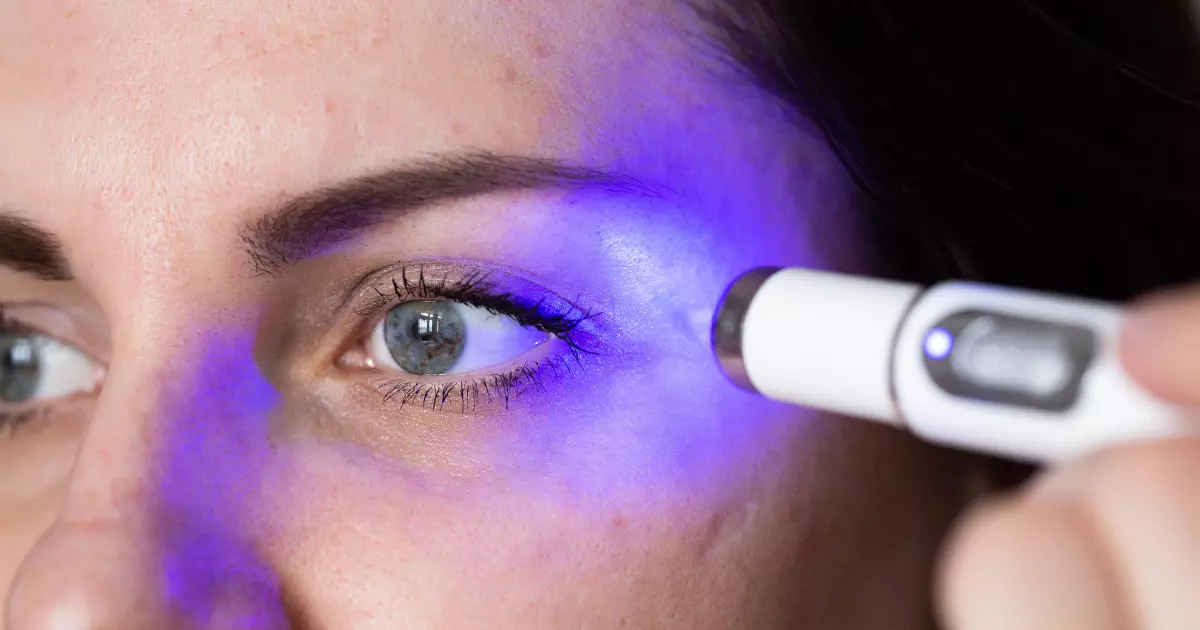
Skin microneedling therapy is a minimally invasive procedure that gained traction in the treatment of acne scars. Also known as collagen induction therapy, it holds promise for skin concerns, especially for the enhancement of scar appearance.
The process of this cosmetic treatment involves using a device equipped with fine needles. Those needles create micro-injuries in the stratum corneum—the outermost layer of the skin. These tiny punctures trigger the body’s natural healing response by initiating collagen synthesis and elastin production. The boost in these essential proteins helps to fill in and smooth out the texture of atrophic post-acne scars, moderate acne scars, and even surgical scars.
A key aspect of microneedling’s efficacy lies in its ability to promote collagen stimulation in a controlled manner. The procedure encourages the skin to rebuild and repair itself. This results in a brighter skin. Clinical studies have shown significant improvement in skin texture and scar appearance following a series of microneedling treatments.
The versatility of microneedling extends beyond treating acne scars. It is also used for overall skin rejuvenation. It can address skin issues like uneven skin tone, and active skin inflammation. This gives simple skin an overall brightness. Moreover, the procedure can improve the efficacy of topical treatments. The micro-injuries allow for deeper penetration of skincare products.
Microneedling for Acne: Before and After
Microneedling offers a promising solution for those struggling with acne scars. The treatment sessions provide a way to enhance collagen production and elastin production. It improves the skin’s natural healing process after active acne breakouts. It stands out as an effective, minimally invasive option in the wide array of cosmetic treatments and aesthetic procedures available today.
Here are some sample photos of people who went through skin microneedling therapy for acne scars.
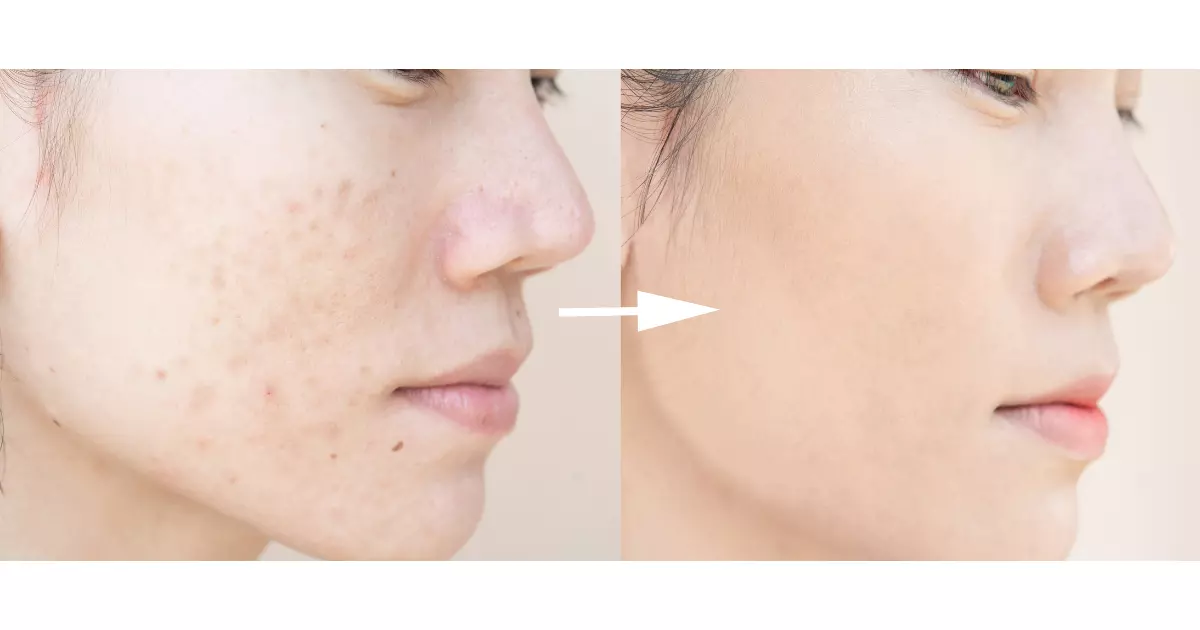
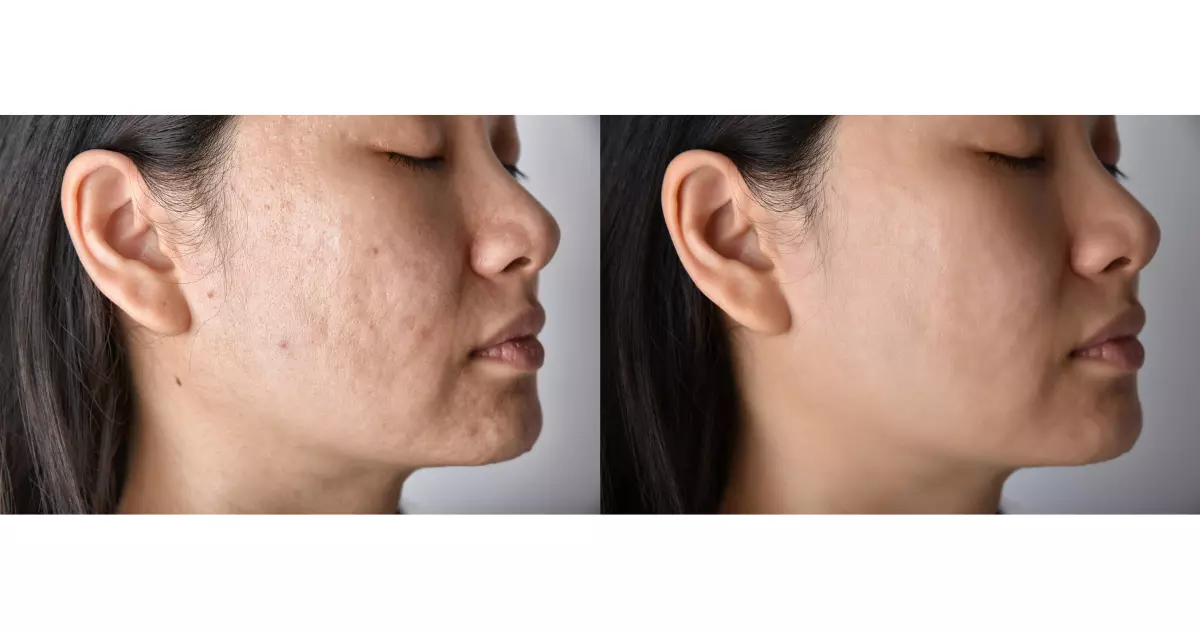
How Long Does Microneedling Take to Get Rid of Acne?
The journey to clear skin through microneedling is not an overnight process. It’s a gradual and deliberate path that involves patience and care. When it comes to treating acne with microneedling treatment, understanding the timeline for visible results is crucial.
Typically, the visible improvement of scar appearance can be seen after several sessions. An average microneedling session, overseen by a board-certified dermatologist, may last for about 30 minutes to an hour. It is recommended to have 3-6 treatments spaced about 4-6 weeks apart. This spacing is vital to allow the skin to heal properly. It also maximizes the benefits of the treatment.
The exact number of sessions and the time it takes to see significant improvement depends on various factors. Those include the severity of the acne, the individual’s skin type, and how well their skin responds to the treatment. While some may notice a moderate improvement in their acne scars after just a few sessions, others might require additional treatments to achieve their desired results.
What Are The Side Effects of Microneedling for Acne Scars?
Post-treatment, the skin may show signs of minor skin irritation, redness, or swelling. Typically similar to a mild sunburn. But nothing to worry about as it subsides within a few days. A numbing cream is applied to minimize discomfort before the session begins.
Another potential side effect is skin dryness and flaking in response to skin microneedling. This is a normal part of the skin’s healing process as it undergoes collagen synthesis and elastin production. It’s important to keep the skin moisturized and follow the aftercare instructions.
Bruising and bleeding are rare and usually minor. These are more likely to occur in sensitive areas or those with sensitive skin. The needles used in microneedling are very fine, so significant bleeding is uncommon. But a few spots of blood during the procedure are normal.
Infections are an exceedingly rare side effect of microneedling when performed in a professional setting. However, ensuring that the procedure is done in a clean environment and that the equipment is sterile is crucial. A reputable microneedling clinic or private dermatology office will adhere to strict hygiene standards to minimize this risk.
Lastly, allergic reactions to the anesthetic cream or other products used during or after the procedure are possible. Discussing any known allergies with the healthcare provider during the microneedling appointment is essential. It’s important to remember that these side effects are generally temporary and often resolve within a few days to a week.
Wrapping Up
Microneedling for acne scars stands out as a beacon of hope for those yearning to reclaim their skin’s natural beauty. This transformative procedure harnesses your body’s own healing mechanisms. It effectively diminishes the appearance of acne scars and promotes a more youthful, radiant complexion.
If you’re seeking a path to revitalized skin, Inner Ocean Center for Healing offers a microneedling service tailored to your unique needs. Choosing us means choosing a partner who understands your journey towards skin rejuvenation. We offer an experience that integrates holistic care with cutting-edge technology.
Start your journey to brighter, smoother skin with us. Contact us today to explore how our microneedling service can be your gateway to renewed confidence.

